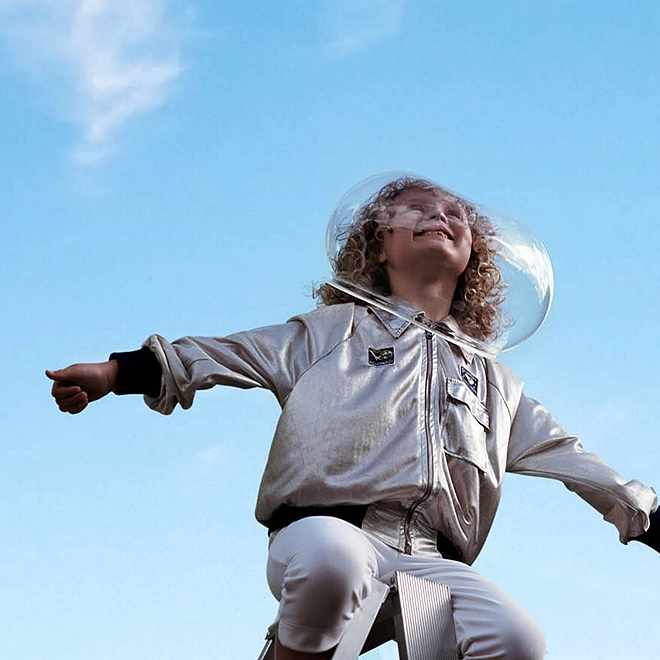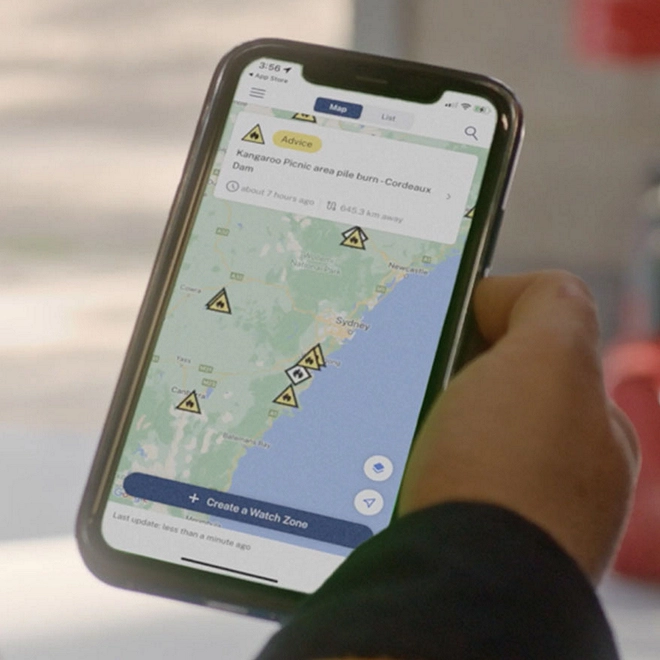Personalised climate data for every Aussie farmer.
Rain, hail or shine.
Deloitte's Lorrae Strahorn shares the good thinking behind a digital tool that gives Aussie farmers free personalised data to help them stay resilient in the face of climate change.
Discover our good thinking in action.

Climate change through the eyes of a farmer
“Climate data sometimes doesn’t resonate…because it’s on that scale of 2030 or 2050,” says Lorrae. “And farmers they’re not focused on 2030. They’re focused on what needs to happen on the farm this week, this month, this year.”
This didn’t mean farmers weren’t interested in the environmental impacts of climate change. Quite the opposite in fact.
Lorrae noticed farmers were using drones and even getting helicopter licences to understand the environmental changes happening on their properties.
“They were taking these pictures from the same location across the seasons and years,” says Lorrae. “And because these properties can be so large, it’s quite tricky.” This desire to see and record these large-scale changes got the team thinking. We asked, “What if we could give all farmers a bird’s eye view of their properties? And these were snapshots over time?” The Bird’s Eye View feature was born.
Seeing the bigger picture
Using satellite imagery and data, the feature gives farmers an aerial perspective of their farm's vegetation health, vegetation cover, surface moisture and land surface temperature.
It also has a "Detecting change" feature, which helps to find anomalies — areas of the farm that have changed the most (positively or negatively) on a seasonal basis. And then farmers can explore pathways, which are options for becoming more resilient in the future.
Today, it’s one of the Climate Resilience Tool’s most popular features. It helps farmers, to literally zoom in and out, to see what needs to happen this week, this month, this year to become more resilient for the future.

Making a resilience tool for a resilient bunch
But what does resilience mean anyway? Especially to farmers. Lorrae acknowledges there’s “a delicate tension involved in creating a resilience tool for those who are already very resilient.
"When co-imagining with farmers and asking, “What does a resilient farm look like?”, the team came to the simple realisation that resilience is not a one-size-fits-all solution.
“Resilience is really that whole-of-farm lens. It’s very contextual to the farmer’s unique, individual circumstances,” explains Georgia Gifford, Senior Manager Climate & Sustainability.
Just as no two humans are the same, no two farms are the same. The sheer size of Australia means conditions vary drastically for farms dotted across our sunburnt nation. “What works for farmers up in tropical north Queensland may not work for farmers down south,” explains Georgia. “We had to allow for different circumstances for different individuals across the nation.”
Like a river with multiple channels flowing into one another, resilience for farmers is made up of three distinct streams: environmental (e.g. rainfall, soil biology, surface conditions), personal (life stage, goals for the farm), and financial (debt portfolio, revenue streams, commodity prices).
A mindset shift
Given these idiosyncratic complexities “where everything is related to everything”, it was an “impossible ask to provide farmers with a tool that gave them a neat, prescriptive list of things to do to become more resilient,” says Georgia.
“Systems are changing very, very fast. The way things have been done in the past, may not work for what’s coming. That mindset shift is required for us to be prepared for that uncertainty.”
One farmer eloquently quoted Charles Massy, a pioneer of regenerative agriculture practices in Australia: “The most important area of the farm you need to change is the six inches between your ears.”
Indeed, resilience is as much mindset as it is action. “So it was about providing guidance to facilitate their thinking, rather than a specific formula for resilience,” says Georgia.
Pathways forward, with the best available science
That guidance comes in the form of adaptation pathways – case studies and advice that’s specific to the farmer’s region and commodity (e.g. cattle, fruit, vegetables, diary, grains).
“We worked really closely with the climate scientists on our team to make sure the advice was scientifically robust and based on the best available science,” says Lorrae.
Georgia explains that “alongside that ‘tried and true’ bucket of practices, we also had the ‘innovative, emerging’ bucket – practices to keep an eye on because farmers are going to need to transform.
”Having the two side-by-side was a deliberate design choice, intended to prompt farmers’ thinking and encourage them to self-experiment and take on their own research and development projects."
The tool isn't trying to tell anyone what to do. It’s about building awareness and different ways of thinking,” says Lorrae. “All we can do is show what has worked for others. And let farmers decide. Because it's their farm, with their soil type.”
Sowing the seeds for change
From initial observations to clickable prototype through to launching a pilot and releasing ongoing improvements, the free digital tool now has over 850 users, a number that is set to grow as broader communication and adoption activities are rolled out.
While it will take more than one tool to meet the Herculean challenges ahead, helping farmers understand their resilience and providing pathways to spark curiosity, encourage experimentation and prompt them to re-make their futures is a crucial step in the right direction.
It signals a broader, seismic shift for the agricultural industry – and society at large – as we prepare for an uncertain future by looking beyond sustainability, towards regeneration and move towards a way to support the land and wellbeing of the person, while still supporting the financial outcomes of the business.
The question is, are we willing to give it a go?

Opens in new window
Opens in new window




